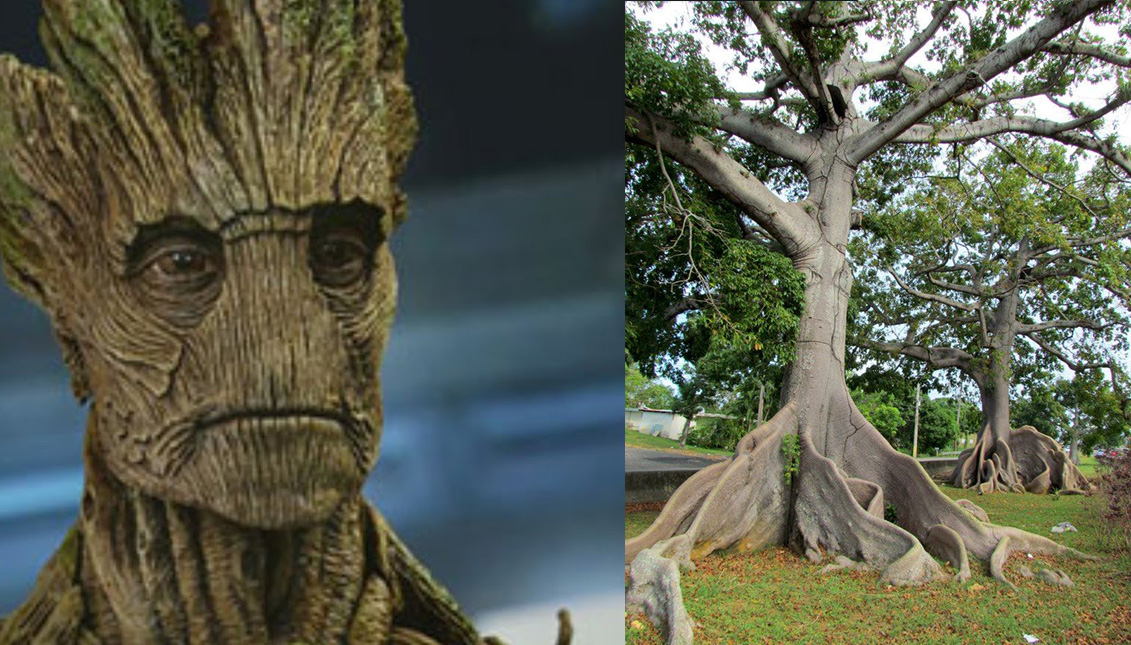
The Puerto Rican roots of Groot, Marvel's "sacred" superhero
Until now everyone had the character of Guardians of the Galaxy for a good-hearted alien tree, but its symbolism is much deeper.
Abuela Estela knew it from the moment she saw it on television. "That's a ceiba (kapok tree)," she told her grandson. Yes, the most sacred tree of Taínos. Estela is one of the characters that appear in the comic book Guardians of Infinity #3, where Groot, who made us all fall in love since its appearance in the movie, MCU Guardians of the Galaxy, is featured accompanying the Thing on a trip through New York.
According to ScreenRant, during the trip, as the Thing shows Groot the beauty of the city where he was born, the evil villain, Plantman, attacks the bus they are traveling on and the fight jumps to the media. It is just at that moment that Estela, who owns a Puerto Rican restaurant, identifies Groot as the tree that contains the spirits of Puerto Rico's Taíno ancestors that died during colonization.
The author of the story, Edgardo Miranda-Rodriguez, wanted to give the half-alien, half-plant superhero a Taíno heritage, just like the Thing, which is of Jewish descent and is a nod to a mythical golem, the clay creature animated by a rabbi to be his servant — only that in the end, he betrays his creator.
Miranda-Rodriguez did a lot of research to give Groot a mythical past like the ceiba, the tree that has played an essential part in the myths and legends not only of the Taíno Indians, but of the Mayan worldview and much of Mesoamerica. Indeed, Groot is from Ponce, where the well-known Ceiba Park in Puerto Rico is located.
But the comic also has another activist background, since Abuela Estela turns out to be the true heroine of the story, reinforcing the role of the seniors and their wisdom as guardians of the past, just like the trees, those other ancient old men whose age we praise, even though it is not the case with the abuelos.
With a colossal bearing — the ceiba tree can reach 70 meters high and is found in many tropical forests — the tree is the origin of many stories and appears in movies like Avatar, where a mother tree of souls appeared.
Its symbolism is very ancient and of Mayan origin, the first man was born under its branches and they also support the sky while its deep and enormous roots penetrate to the underworld.
RELATED CONTENT
That is why many countries have it as an emblem, since it is not only the most symbolic tree of Puerto Rico, but also venerated in Cuba, Guatemala and even present on the flag of Nicaragua.
However, Groot is Taíno — half alien and half Puerto Rican, as Abuela Estela recalls — and beneath its crown lies one of the most beautiful and at the same time tragic legends of the island and its colonial past.
It is said that Guanina, the sister of the cacique Agüeybaná, fell in love with the Spaniard Cristóbal Sotomayor, who was the mayor and founder of the town of Sotomayor, in Puerto Rico. But the Spaniard wasn't the only one who was in love with her, so was Guarionex, an Indian who led the fight of the Taínos against the colonizers because they were fed up with their abuses.
The result of the battle was the deaths of Sotomayor and Guanina, who were buried under a ceiba tree. Since then, it is said that the whispering heard when the wind moves the leaves of the ceiba tree are the lovers who sing and celebrate their eternal union.
There were even more beliefs rooted in the ceiba tree. As it was a carrier of energy and sheltered all the spirits of the jungle. The Taínos placed their hands or foreheads on its wood to obtain strength and resistance. The Indians also believed that they could consult it as a kind of oracle and if they slept under it, they would have prophetic dreams, since it communicated the "above" with the "below".











LEAVE A COMMENT:
Join the discussion! Leave a comment.